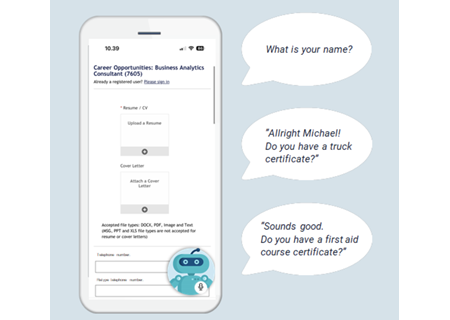The convergence of artificial intelligence (AI), generative (GenAI), and machine learning (ML) is transforming corporate human experience management (HXM) practices.
From streamlining recruitment procedures to improving employee development and predicting workforce trends, these technologies are ushering in a new era in which AI technologies grow to become an indispensable ally in the HR department.
But one of the big challenges facing HR professionals in the digital age will be trying to maintain the human touch while incorporating technologies such as AI and ML, which are inherently devoid of nuance and human emotion.
AI Technologies Streamline Recruitment
The area where AI has perhaps made biggest inroads in HR is on the supply side, with numerous tools such as ChatGPT, the best-known GenAI, now helping job seekers tailor their resume and cover letter to the requirements of a posted job, or coach them for the interview.
The challenge that creates for employers is that many of the applicants will, at first sight, appear well suited to the job, particularly if they have used a tool such as ChatGPT to ensure their resume and cover letter contains the right keywords.
AI-powered job matching algorithms have markedly streamlined the initial selection process, ensuring a more precise alignment between candidates and job specifications. Nevertheless it can be disconcerting for applicants to know that before they get to talk to a human recruiter, they must first beat an algorithm.
Moving beyond the initial filtering stage, the use of AI-based analytics in candidate assessment is proving instrumental in providing HXM professionals with better insights into candidate skills, preferences, and cultural fit, thereby fostering a more diversified and inclusive workplace.
Virtual Interviews and Chatbots
The integration of virtual interviews and chatbots driven by generative AI contributes to greater efficiency and fairness in candidate evaluations by standardizing processes and minimising unconscious biases.
NTT DATA has developed a chatbot-based app to speed up the recruitment of blue-collar workers, who may be unfamiliar with traditional white-collar recruitment tools, such as job portals, online application forms and email, and unwilling to go through a lengthy selection process.
Based on SuccessFactors, SAP’s cloud-based HXM software, the app simplifies the application process for candidates, helping them quickly find jobs they are qualified to do and then automatically filling in the application form using the information the chatbot gathers during a short conversation.

Figure 1: Blue-collar recruitment powered by chatbot
Personalised Employee Onboarding and Training
ML-driven adaptive learning platforms represent a promising new tool for employee development. By scrutinising performance data, these platforms tailor training content based on individual strengths and weaknesses, optimising both onboarding and continuous professional development.
Furthermore, the amalgamation of AI, the metaverse, and digital assistant technologies is facilitating immersive onboarding experiences. This innovative approach caters to the unique needs of each employee, resulting in heightened engagement and assimilation into organisational culture.
Performance Management and Predictive Analytics
Annual performance reviews are a standard practice in many organisations, serving as a structured way to evaluate employee performance and reward high performers.
However, this traditional approach has many drawbacks: the assessments are subjective and affected by human bias, conscious or otherwise; the assessment experience is frequently stressful for employees; and the emphasis is on evaluating past performance, rather than looking forward at ways the employee can improve, learn and grow.
Real-time feedback systems, underpinned by AI, offer a better alternative by enabling organisations to continuously monitor and enhance employee performance, so reducing the importance of annual reviews. This agile feedback loop allows for prompt adjustments, contributing to a more responsive and dynamic workforce.
Predictive analytics models can also identify patterns and precursors of possible employee turnover and to identify high-potential individuals, enabling organisations to strategically nurture and develop talent for future leadership roles.
Challenges and Ethical Considerations of AI in HXM
The integration of AI in HR processes, as in many areas of human activity, raises obvious privacy concerns, given the sensitivity of employee data. Striking the right balance between data-driven decision-making and safeguarding individual privacy is imperative for creating and retaining trust within the workforce.
In summary, while AI promises efficiency gains for HXM professionals, preserving the human touch in HR processes remains indispensable. Striking the right balance between technological prowess and human intuition ensures a holistic and empathetic approach to managing the workforce and creates a more inclusive and efficient workplace.